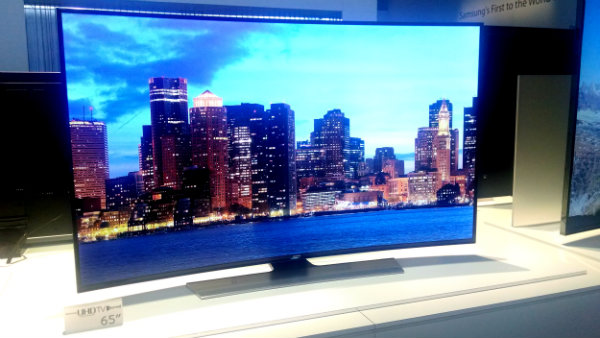It’s 2014 and every cool futuristic technology we’d hoped would exist and solve our life’s problems after seeing Back to the Future II and 2001: A Space Odyssey aren’t exactly here. So what can we do about it? Obviously, what we Americans do best: Whine. Without further adieu, here’s Tech Void’s list of the five biggest technology gripes in 2014.
1. Fiber Optic Standard for ISP
Comcast, Verizon, Time Warner, and the devils of ISP are still pushing us low-bandwidth internet despite the ubiquity of FiOS. Hell, even the telephone-tethered DSL lines are still being sold. Oh, and it’s likely bundled with crap you don’t require, such as a land line or home security. It’s 2014, guys. Just imagine for a minute living in an average DC row house with 3-5 roommates and having 10 MB speed cap on your bandwidth. It’s that frustrating situation where if two people are watching Netflix, YouTube, (and feasibly other extra-curricular sites), everyone else is compromised. Resetting your modem every night at 8 p.m. when the masses arrive home from work is nice exercise, but it shouldn’t cost you money. This first world problem sounds like a joke, but with amount of digital content consumed by the average internet user, it’s silly we’re still plagued by slow, intermittent Internet when our cellular service providers’ 3 and 4G networks are splendidly constant.
2. HD Television isn’t Standard Either
Yup, sorry, we’re still talking basic cable/ISP providers. It just so happens that the same companies failing to offer Americans with livable bandwidth for changing times (remind you of the minimum wage debate?) are also screwing viewers on their cable television viewing experience. If you want people to buy your over-priced HD content, maybe you should stop selling packages consisting of standard definition television. I get it, if there’s a market for people who don’t care about HD, you might as well advertise. But consumer HD television has been around beyond a decade, and my $200 Vizio is still pumping out fuzzy, pixelated garbage instead of the rich, contrasting color this television was built for. Why should anyone have to pay an extra $50/mo to upgrade to HD content when it’s already standard for websites and Blu-Ray? Even local channels come in HD via antenna for free.

Sure, you can argue the infrastructure isn’t there to handle, and the problem is much more technically complex, but this is a practical technology gripe. It’s 2014 and we’re still paying to watch SD content on our HD TVs. That’s like using your toaster oven to cook a hot pocket.
3. Killing Cash
Just imagine the economical advantage for EVERYONE if there was no loose change to misplace. Apps like Google Wallet and ISIS are slowly killing the need of actually carrying plastic, but what I really want is to eliminate my need to carry cash. DC finally just required cabbies to take cards, however I’m still in need of cash for the average street vendor or paying my friends back for beer. We might not have the infamous hoverboard or flying cars, but in 2014 I was hoping to leave my literal wallet out of every transaction.

I learned a few years ago that the DC government doesn’t actually allow payment using cash at some community centers. Rumor has it it’s because they don’t trust their employees. And honestly, it’s really smart. With no cash to handle, robberies, skimming employees, and basic money laundering has to be much more sophisticated to exist. What if the government started mandating the use of credit cards or other electronic transaction services to eliminate the use of cash? I hear what you’re thinking, what about when Skynet becomes self aware and steals all of our Bitcoins? For the sake of argument, our current cash isn’t even backed by gold, so who is to say electronic-based currency is any less secure?
4. We Still Have Cords?
This gripe is actually one technological problem that maybe be eliminated soon. I reported at CES 2014 that QI’s wireless charging effort is going to be big in 2014, quashing the need for plugging in smartphones, blenders, and the like thanks to charging pads. But still, it’d be lovely to connect a monitor, keyboard, and mouse to a PC without having zip-tie a bunch of cords. Wireless devices exist for the basic accessories, of course, but for those heavier wattage devices, it’d be lovely to deal with magnetic induction like that experimental Tesla charger covered by Engadget.
5. Typing No More
It’s likely you have a desk job yourself, and if you’ve seen Spike Jonze’s film Her, you know there’s got to be a better way to use a computer–without a keyboard. Typing is ancient; Typing causes carpal tunnel; It even limits the quickness of your train of thought. So what can we do about this? Google Voice and Siri are already available for your Android smartphones, and Google’s voice search recently was hooked up to Chrome’s browsers for computers. Unfortunately, speech to text is equally antiquated, but it’s finally started to move somewhere beyond that.

What I really would like for my computer devices to do is simply read my mind. Rather than requiring me to type, speak, or even tap and point to direct a computer what to do, what if I could simply think it? Using stream of consciousness to control an inanimate object would be the epitome of lazy-awesome. Granted, the ethical implications of this would surely lead to the entire planet being spied on and detained by the NSA (And you thought Google already knew how disgusting you were). But jokes aside, if I could simply think my blogs into the ether, blink at my car to unlock its doors, and get Pandora to switch back to Bob Marley without so much as a nod, my life would be complete in terms of tech.
The frightening part? It’s actually happening. According to the Guardian, in 2012 scientists were already studying this kind of technology by listening to brain waves. In a study titled “Reconstructing Speech from Human Auditory Cortex,” sounds were played to epileptic patients about to undergo surgery. Using electrodes attached to the brain, neuroscientists were able to play back this information as frequencies, deciphering it into sounds of the words as the patients heard them such as “waldo” and “structure.” It’s actually really frightening to listen to. There’s even a video of the creepy development. While it’s a few steps away from software engineering our computers to read our thoughts, it’s still fairly promising.



